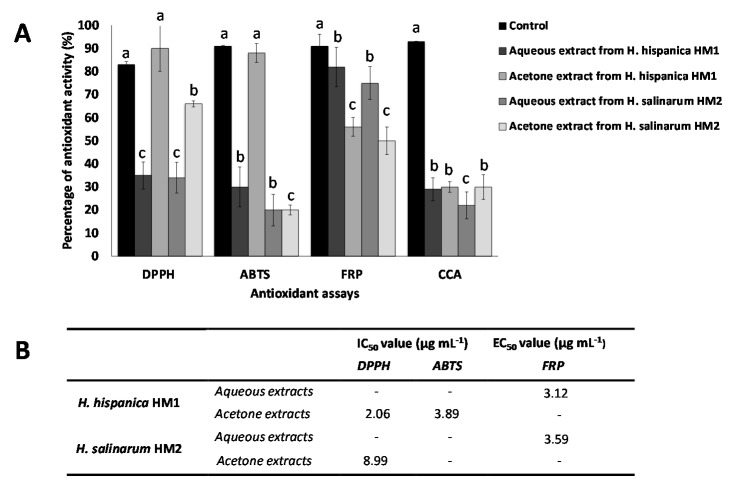Figure 2.
Antioxidant activity of aqueous and acetone extracts (1 mg mL−1) obtained from the haloarchaeal strains H. hispanica HM1 and H. salinarum HM2, determined by DPPH (1,1-Diphenyl-2-picrylhydrazyl) and ABTS (2,2′-azino-bis(3-ethylbenzothiazoline-6-sulfonic acid)) radical scavenging assays, or FRP (Ferrous ion reduction potential) and CCA (Copper chelating activity). For each assay, the data were submitted to one-way variance analysis (ANOVA). Bars are followed by different superscript letters (a, b or c), which denote groups with significant differences according to the Duncan’s Multiple Range Test (p < 0.05) (A). The half maximal inhibitory or effective concentration (IC50 or EC50) were calculated when the activity was higher than 65% (B). These values were normalized to the content of proteins and carotenoids in the extracts, being the protein concentration of the aqueous extract 47 and 30 µg per mg DW and the carotenoid content of 10 and 12 µg per mg DW, respectively, for H. hispanica HM1 and H. salinarum HM2.

